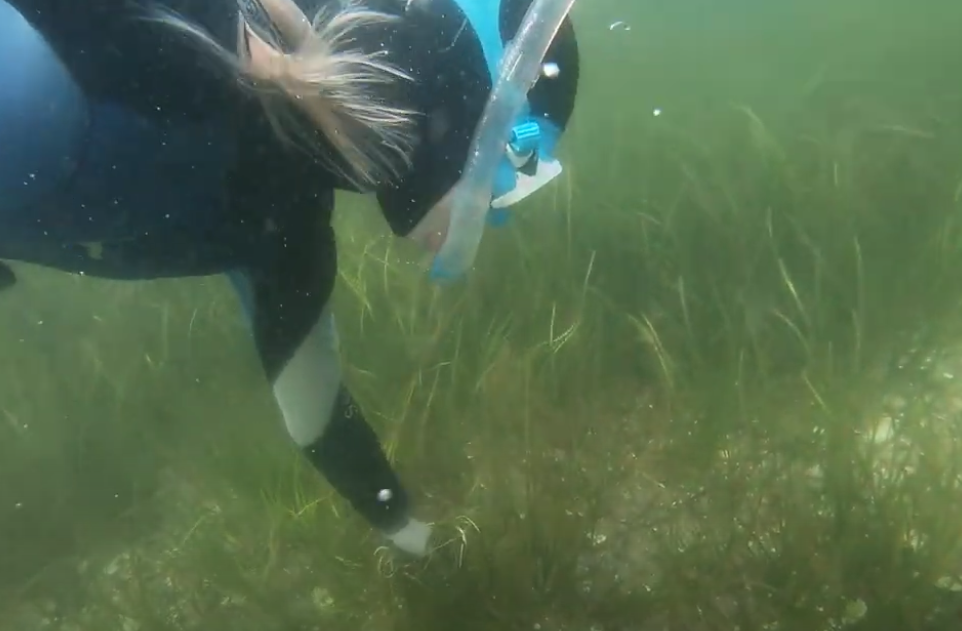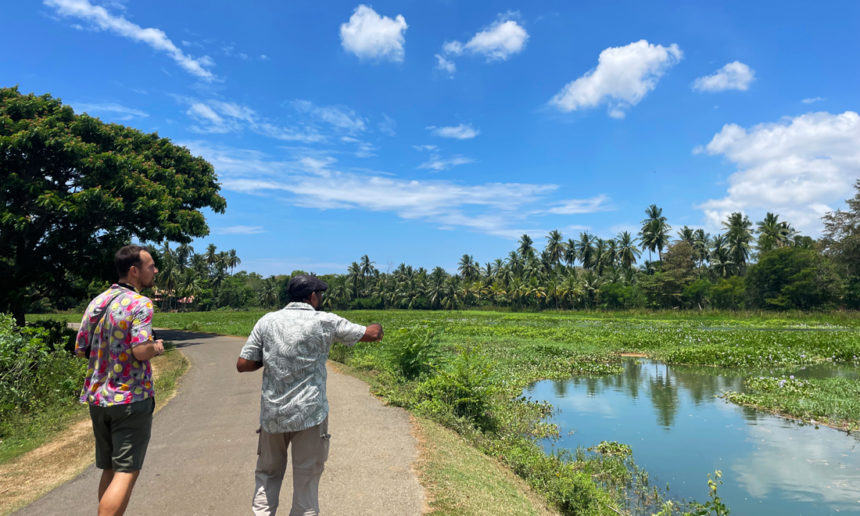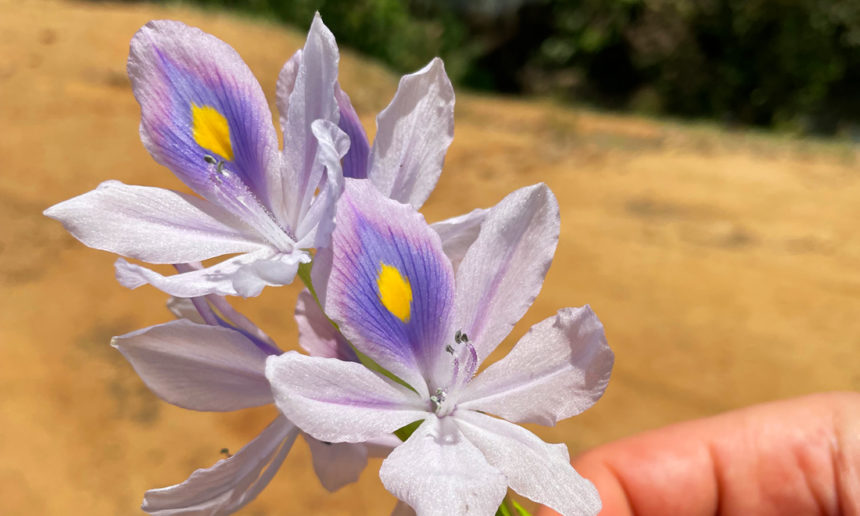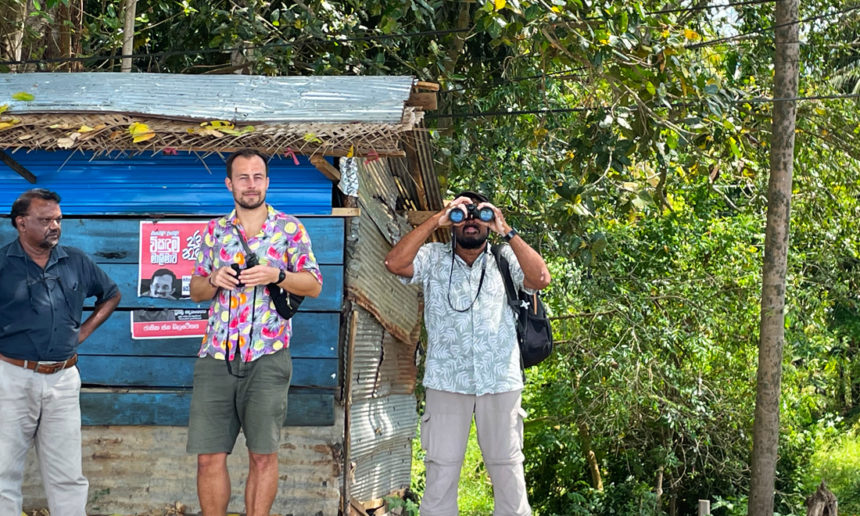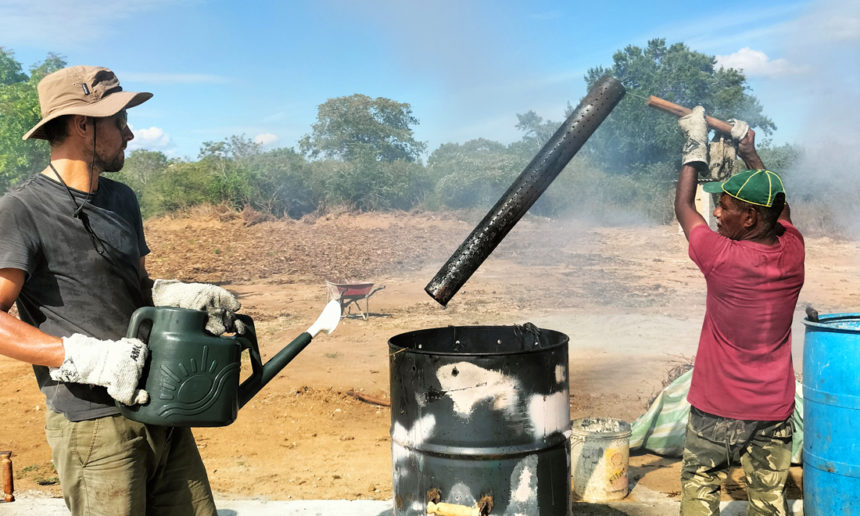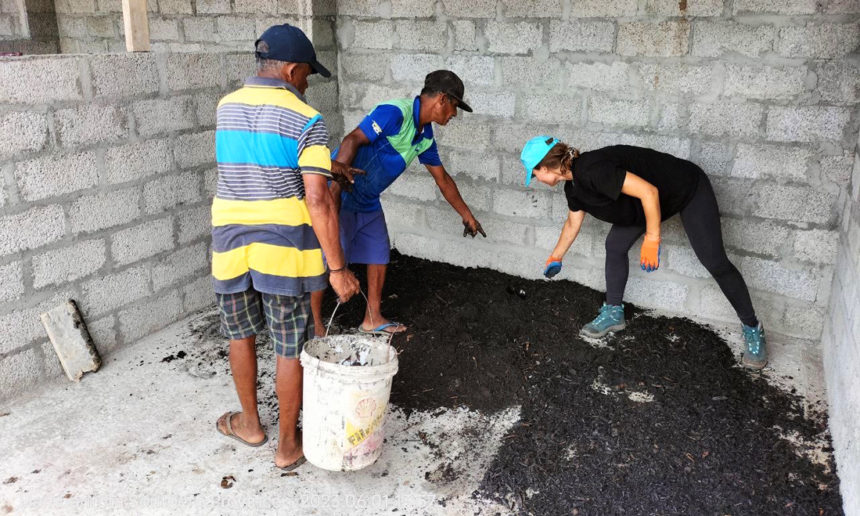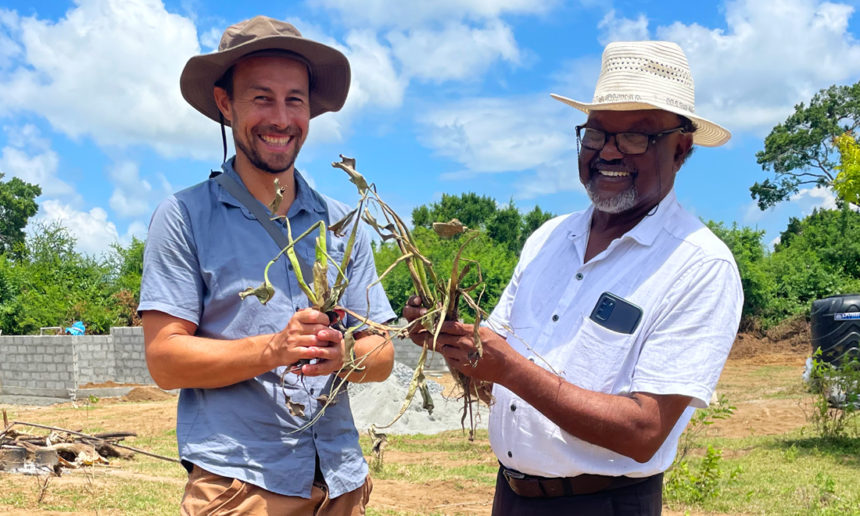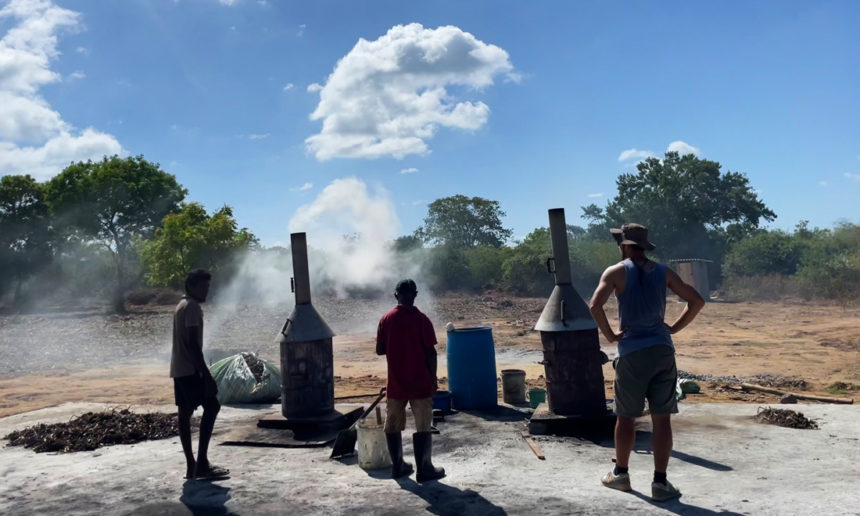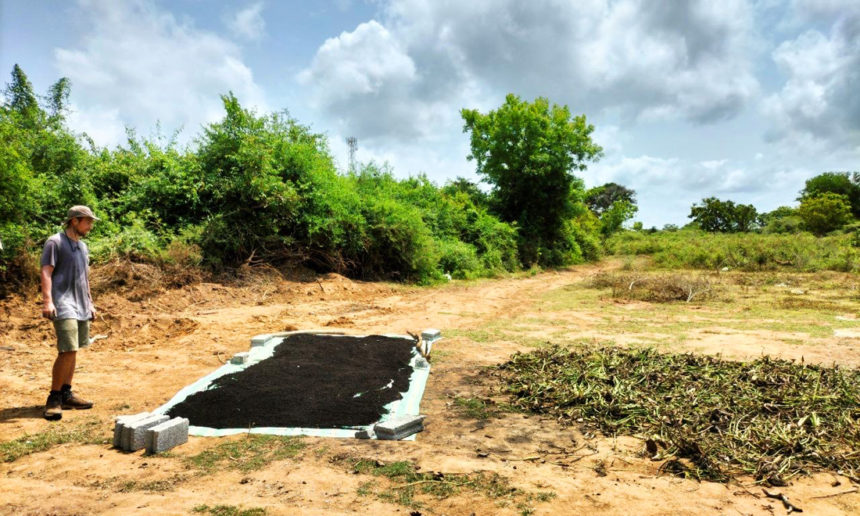The water hyacinth destroys livelihoods. The non-profit Char2Cool turns it into a CO2-absorbing soil enhancer.
The water hyacinth is a herbaceous marsh or aquatic plant that was originally introduced to tropical areas of Asia and Africa as an ornamental plant because of its pretty purple flowers. The problem: While the water hyacinth is eaten by manatees in the Amazon, natural predators are lacking in other places. With a sufficient supply of nutrients, such as fertilisers, a water hyacinth population doubles about every fortnight. According to calculations by the Char2Cool association, up to 17.5 tonnes of water hyacinths can grow in an area the size of a football field – every day!
For the affected areas, the occurrence of water hyacinth is catastrophic due to its explosive growth. The plant forms a dense layer under which fish and other creatures die. Even boats cannot penetrate the dense water hyacinth carpets. When the plant dies and sinks to the bottom, methane is produced. Water hyacinth is the world’s largest natural emitter of methane, which is 86 times more harmful to the climate than CO2.
The non-profit organisation Char2Cool has developed a solution that turns the problem into an opportunity. Through local partners like the start-up Fuscum Soil Enhancer in Sri Lanka, which we support in August, the plants are fished out and processed into plant carbon (Biochar). This prevents the emission of toxic methane and binds CO2 stably in the soil for hundreds of years. In this way, the association not only makes a considerable contribution to climate protection but also creates jobs and food security in poor regions.
In order to spread the solution as widely as possible, Char2Cool is developing a financially self-supporting system. The idea: the prevented methane emissions and the subsequent storage of CO2 are measured, certified and sold as a climate protection certificate. In this way, interested companies can compensate for their CO2 emissions where they reach their limits with their own measures by binding CO2 elsewhere – and at the same time fight the invasive water hyacinth. The potential is almost unlimited: The water hyacinth has already been found in 50 countries worldwide and once established it can never be completely eradicated.
Project Evaluation
Give us feedback!
How do you like the project? Answer two questions and give us some quick feedback!
Create your own evaluation with the GOOD Scorecard!
By filling out our online scorecard, you provide us with valuable feedback. You can also download the scorecard and evaluate any any project of your choice.
Contribution to the 17 Global Goals
Life on Land
Fighting invasive species which harm natural ecosystems
Life below Water
Revitalisation of water bodies which degraded through the water hyacinth
Climate Action
Permanent storage of the carbon captured by the water hyacinth
Responsible Consumption and Production
Substitution of imported chemical fertilizer by locally produced soil enhancer
No Poverty
Fighting poverty and strengthening rural communities through new sources of income and improved living conditions
Video
Images
